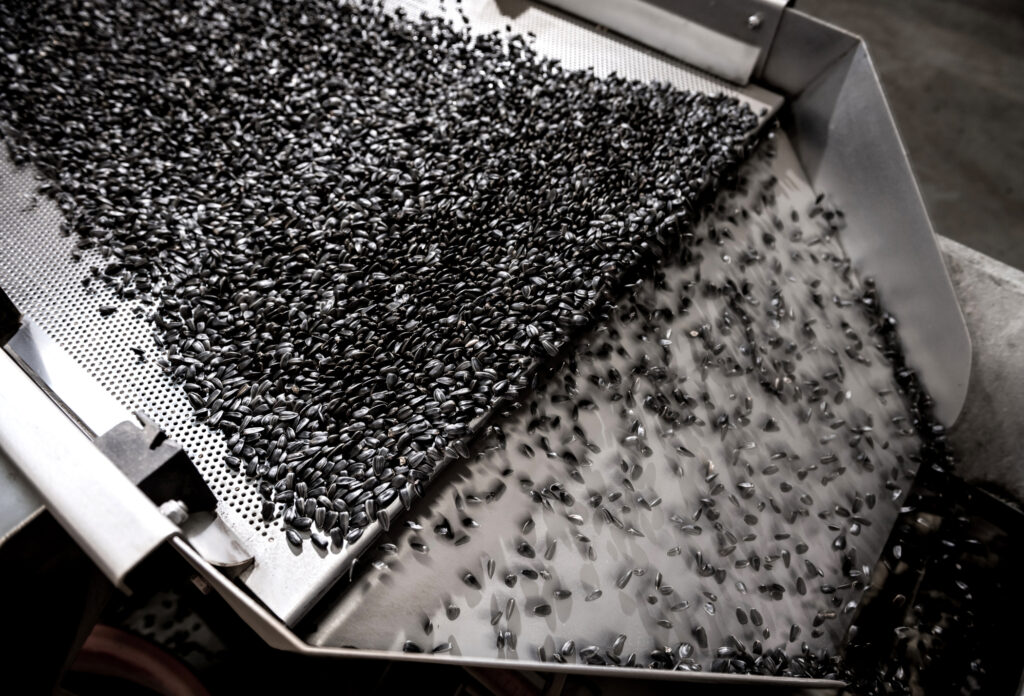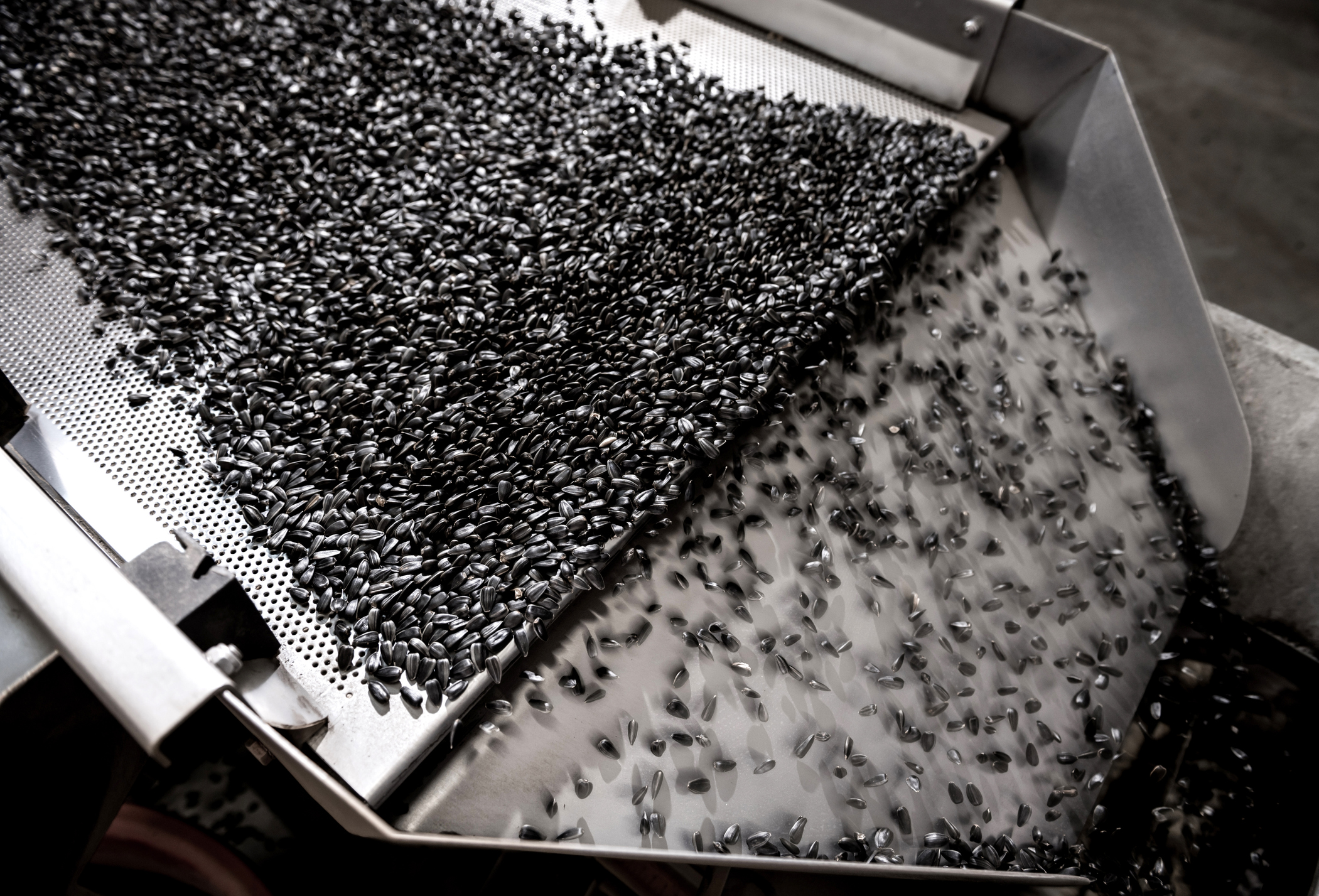
Conditioning oilseeds, or cooking them before extraction, is one of an oil mill’s most important processing steps. But cooking wasn’t always a convenient process, especially in the past when hydraulic batch presses were the predominant extraction equipment in the industry.
After Anderson developed the continuous process of crushing oilseeds in the early 1900s, the company continued innovating new ways to improve the process—starting with the vital step of heat treatment to prepare seed material for pressing. Anderson revolutionized the process by developing new cooking methods to condition oilseeds, making the downstream crushing operation more efficient and cost-effective.
In this blog, we’ll highlight how Anderson revolutionized the process of conditioning oilseeds and explain why the cooking process is essential to effective pressing.
History of conditioning oilseeds
Before Anderson invented the first continuous mechanical screw press, cooking oilseeds was laborious. Seeds had to be heated in a separate vessel, then moved into the press, batch by batch, while precious time lapsed.
In 1929, Anderson invented a “tempering apparatus for oil-bearing materials,” as the patent called it, to facilitate a more continuous operation. This invention bolted directly on top of Anderson’s Expeller, generating indirect steam heat to continuously pre-heat seed material as it passed into the press. Anderson realized that raising the seeds’ temperature lowered the oil’s viscosity, making it flow easier during extraction.
Over time, Anderson realized that the cooking process also changed the structure of the proteins in the seeds by solidifying them so the oil could drain away freely. Think of a raw egg, for example—proteins in the egg are naturally liquid, but cooking the egg solidifies these proteins. The same transformation happens in oilseeds, solidifying the proteins so they can exit the press along with the solid meal, separate from the liquid oil.
Through the decades, Anderson continued experimenting with heat to isolate the ideal oilseed cooking conditions. Excessive heat could scorch the seed material, adversely affecting both the oil’s yield and quality. On the other hand, insufficient heat produced an abundance of “foots” or residues because proteins dissolved in the oil rather than solidifying into the meal.
Heat treatment also served another key function in Anderson’s early experiments by destroying anti-nutritional compounds found in raw seeds. In those days, cottonseed was king, so Anderson sought ways to effectively deactivate the toxic gossypol cottonseeds contained. The steam heat quickly sterilized the seed material, deactivating anti-nutritional factors like gossypol in cottonseed and urease and trypsin inhibitors in soybeans
To press as much quality oil from the seeds as possible—while producing quality meal with low residual oils and high protein content—Anderson gradually perfected the oilseed cooking process.
What is oilseed conditioning?
The process of conditioning oilseeds with heat treatment before pressing is commonly known as “cooking,” but it involves several distinct steps beyond just cooking.
- Heating raises the temperature of the seed meats, which lowers the viscosity of the oil inside.
- Cooking the seeds involves holding the material at that elevated temperature for a certain amount of time to thoroughly denature the proteins and deactivate any fat-splitting enzymes or anti-nutritional factors. Processors traditionally cooked seed material in steam-jacketed vessels for about 15 minutes at 90 degrees Celsius (or 190 degrees Fahrenheit), using steam heat to raise the moisture level to 9-12% depending on the seed.
- Drying is a necessary next step to remove the moisture added during cooking—using temperatures above 100 degrees Celsius (or 212 degrees Fahrenheit) to dry out the material to about 3-5% moisture for more efficient pressing.
Anderson’s steam-jacketed tempering apparatus eventually led to stacked cooking and drying vessels in processing plants. However, a traditional stack cooker takes 5-10 minutes to heat seed material to cooking temperatures. Meanwhile, the air and moisture in the vessel begin to activate enzymes that release harmful compounds into the oil. By the time the material reaches temperatures high enough to deactivate these enzymes, the damage may already be done.
To accelerate and streamline the process of conditioning oilseeds even more, Anderson developed the Extruder — which uses electrical energy instead of steam heat to efficiently heat, cook, and dry the oilseeds in a single step. Extruders rapidly cook oilseeds in a matter of 30 seconds or less, compared to 15 or 20 minutes in a traditional cooking vessel. Extrusion accelerates the process even more, helping oil mills increase their capacity without increasing equipment costs.
Most major oilseeds benefit from cooking before pressing, including soybeans, peanuts, cottonseed, sunflower seed, castor seed, and flaxseed. However, fibrous oilseeds with low protein content—such as palm kernel, copra, and sesame seed—don’t require much (if any) cooking time beyond pre-heating and drying. However, even these fibrous seeds can benefit from some cooking time to help rupture the cell structure and release the oil.
Continuous improvement in cooking
Conditioning oilseeds is not a one-size-fits-all formula. The ideal cooking process and conditions may vary, depending on the oilseed variety being processed; the levels of protein, oil, and moisture it contains; and the presence of harmful enzymes or anti-nutritional factors that must be destroyed. Anderson’s extraction experts can help you analyze these factors to set up the proper cooking equipment within your plant’s processing system.
With more than a century of expertise developing the oilseed cooking methods and machines that oil mills around the world depend on, Anderson continues to innovate the process by helping processors set up successful seed cooking systems. Conditioning has always played a critical role in Anderson’s commitment to helping processors optimize their operations by preparing oilseeds for more efficient, cost-effective crushing before the material even enters the press.
Ready to get cooking? Contact Anderson International to learn how our Extruders and other oilseed conditioning equipment can improve your oil yields.
